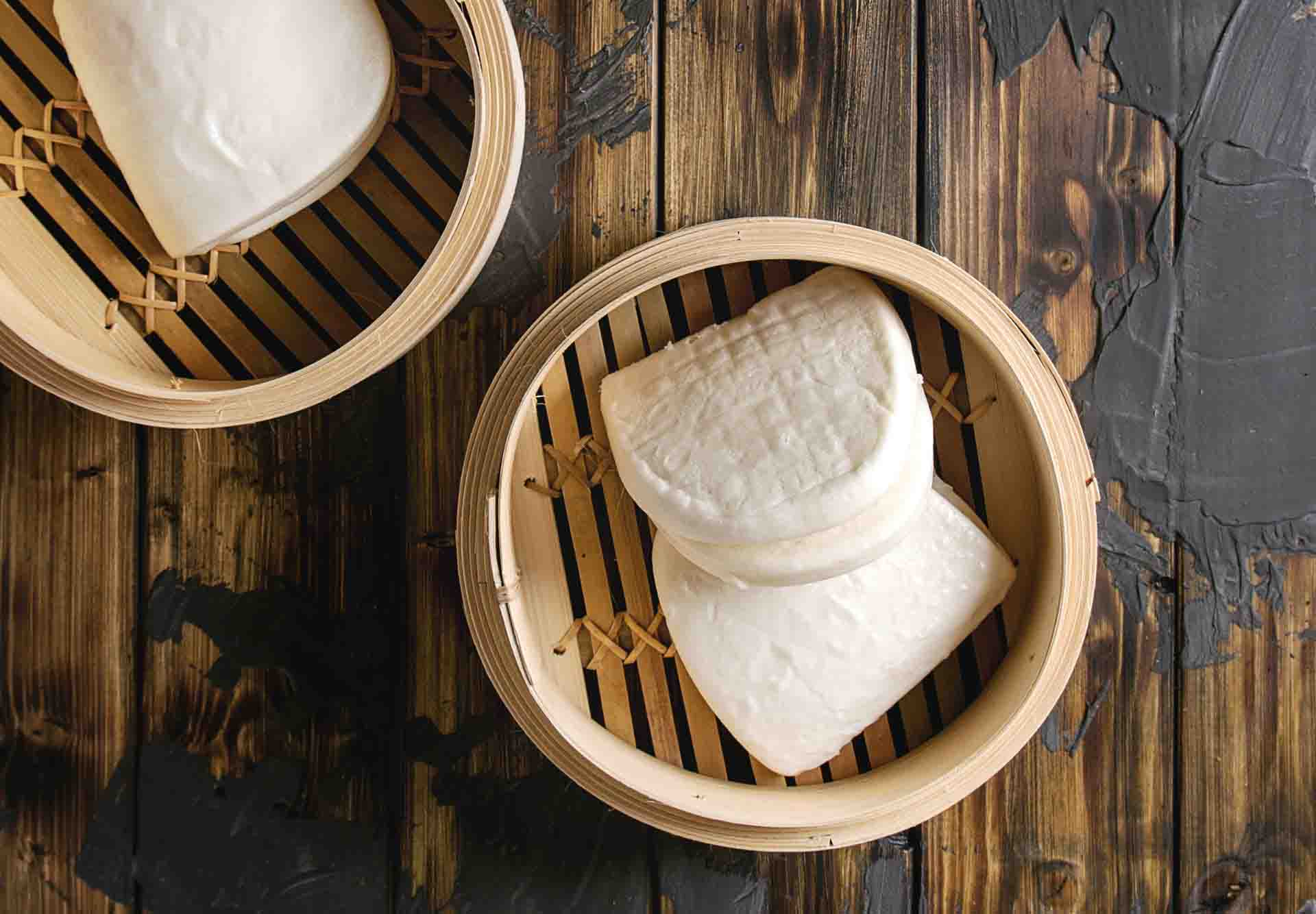Maybe by this point you’ve had enough of me raving about steamed buns. What can I say? Buns, buns, and more buns. Now, before you cover your eyes, let me assure you that the dough recipe for these Steamed Lotus Leaf Buns is one that you can count on. These steamed buns, cooked at home, are perfectly light and fluffy, with just a hint of chewiness.
WHAT IS A STEAMED LOTUS LEAF BUN?
If you’re wondering what on earth this odd-looking bun is, let me enlighten you. Steamed with bamboo leaves, a lotus leaf bun is a Chinese flatbread made from wheat flour.
A sandwich bun can be made as a clam, much like a hamburger bun, which is carefully opened with your fingers. In fact, it is the Chinese equivalent of a burger, however we typically use braised pig, roast duck, or other flavorful meats in place of ground beef patties.
If you ask me, this is the most foolproof recipe ever!
INGREDIENTS:
- 24 pieces of parchment paper (3×4 inch rectangles)
- 2 cups of all purpose flour
- ¾ cup of warm water
- 2 tablespoons of cornstarch
- 1 tablespoon of granulated sugar
- 1 tablespoon plus 1 teaspoon of canola oil
- 1 teaspoon of instant yeast
- ¼ teaspoon of salt
- 1/8 teaspoon of baking soda
INSTRUCTIONS:
- Blend 3/4 cup warm water, 1 teaspoon yeast, and 1 tablespoon sugar in a small bowl until smooth. Just let it 15 minutes for the yeast to “bloom” and start producing foam. Incorporate a tablespoon of canola oil and set aside.
- While the yeast mixture “blooms,” in a separate dish, combine the all-purpose flour, cornstarch, salt, and baking soda. You’ll need 2 cups of flour. Fold the yeast mixture in using a rubber spatula.
- After combining the dry and wet ingredients, knead the dough until it is smooth and soft. When the dough is smooth, soft, and malleable but not sticky, it is ready to be used. If the dough is sticky, add flour 1 tablespoon at a time. To proof the dough at room temperature, brush it with 1 teaspoon of canola oil, cover the bowl, and leave it alone until it has doubled in size, about 1 hour.
- Get your preferred steaming setup ready while the dough is proofing. Buns should not come into contact with the water during steaming, therefore, make sure there is at least a 2-inch gap between the steam rack and the pot.
- When the dough has finished rising, punch it down and knead it for a few minutes to work out the air bubbles. You can’t get perfectly even buns without doing this! Make 12 even portions out of the dough. Lightly grease the tops of the balls before rolling them into 4×7-inch ovals.
- Place a tiny piece of parchment paper in the center of the dough and fold it in half. Cover the bottom of the bun with more parchment paper and put it in the steamer to prove again. Cover the steamer’s lid and let the dough rise again for 20 minutes before you try to use it.
- When the initial 20 minutes are up, crank up the heat on your steamer. Once steam begins to emerge, turn the heat down to medium and steam the buns for an additional 10 minutes. Take the buns out of the steamer, turn off the heat, and let them sit for 5 minutes.
- Do NOT Take off the lid. This is CRUCIAL, as the buns will lose their fluffy shape if the cover is removed before they are fully baked.
- Remove the buns from the steamer after the timer has reached 5 minutes.
- These buns are great fresh out of the oven, but they also store well for later use. Buns will go soggy if condensation forms in the container while they’re being frozen, so be sure to let them cool completely first. Once you’re ready to eat, simply steam them for 5 minutes.
